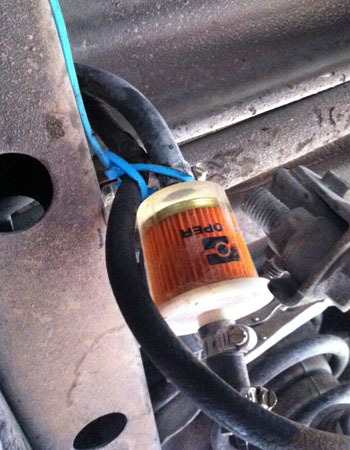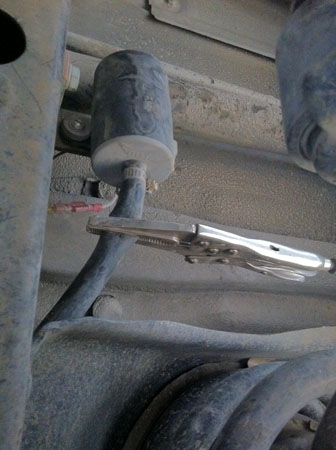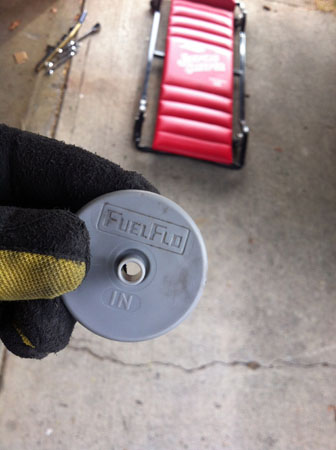Death Valley: Debrief
Recapping, our complete trip totaled 1,250 miles. 450 of those miles were within the boundaries of Death Valley National Park, according to the maps I used. (Note that the park boundary on the west starts way out in Panamint Valley.) We spent a total of 130 miles on dirt.
Our drive from Stovepipe Wells to Titus Canyon to Homestake camp was about 100 miles. Returning to Stovepipe Wells from Homestake (backtracking to Ubehebe Crater etc.) was about 71 miles. Because our driving speeds were so moderate throughout the drive, we experienced better than normal gas mileage as well. YMMV!
Approximate driving distances*
Hampton Inn Suites in Ridgecrest to Stovepipe Wells: 100mi.
Stovepipe Wells to start of dirt road to Titus Canyon, off Hwy. 374: 28mi.
Titus Canyon drive, from Hwy. 374 and ending at North Hwy. pavement: 27mi.
Titus Cyn. dirt road exit/North Hwy. pavement to intersection with Hwy 267 to Scotty’s Castle: 19mi.
North Hwy/267/Racetrack Valley Rd. intersection to start of Racetrack Valley Rd. dirt near Ubehebe Crater: 6mi.
Racetrack Valley Rd. start to Teakettle Junction: 20mi.
Teakettle Junction to Homestake Camp: 10mi.
Stovepipe Wells to Wildrose campground: 31mi.
Stovepipe Wells to Furnace Creek: 25mi.
Furnace Creek to Badwater Basin parking lot: 18mi.
Badwater Basin parking lot to southern intersection of West Side Road: 26mi.
Full length of West Side Road: 36mi.
* All distances rounded up for simplicity & for conservative planning.

Just a few of the many resources used for planning our Death Valley road trip.
Observations & Lessons Learned
1. It seems that we narrowly avoided a disruption to our trip in the form of the reported power outage at Stovepipe Wells. I’m not sure how widespread the outage – which lasted a few days – was. If gas was also unavailable at Furnace Creek then it would have definitely been a major inconvenience. Lesson learned: while gas might be unavailable where planned for a variety of reasons, it’s probably more likely to happen in remote locations like DV.
2. Speaking of gas shortages, losing the aux tank fuel pump also lost us half our onboard fuel capacity, which I’d been using as a reserve. It was still available via my siphon in an emergency, but my lesson there is that it’s better to have fuel in the main tank than the aux tank.
3. The weather was pretty nice when we were in DV, but cold (mid-30s) overnight at Homestake. Someone who was there the following week reported an overnight low of 18F. When car camping, the best bet is to bring too much cold weather gear than too little, at least during the winter.
4. We ran our SPOT Connect throughout the trip and overall it performed well. Battery life was well beyond what I had anticipated, using lithium batteries as directed. However, the SPOT interface is still a bit flaky and we drove around for most of a day without the automatic tracking on like I thought it was. With no data/internet connection for the mobile devices, it wasn’t possible to check the SPOT tracking page to verify that things were working as expected. Overall though it has worked very well for us.
5. Next time I will pre-load offline maps into MotionX GPS HD on the iPad 2. Trying to cache MotionX maps (in GPS HD or Drive HD) when I had a data connection was not at all reliable or effective. In any case, my good old-fashioned paper maps came in handy.
6. Overall, our gear worked very well. Tent, sleeping bags, kitchen kit, tools, etc. all performed as expected. I did forget to bring the tire chains, although it turned out that we wouldn’t have used or needed them anyway.
7. I did note that our typical road trip pattern – driving around all day and camping overnight – was a serious obstacle to static solar power generation. Heavy dust would have been an issue for mobile solar generation too, and along with washboard road battering may be detrimental to the longevity of expensive solar panels. But solar power generation is most likely to be needed in a longer-term static campsite, like when we’re at OX12.
8. Lastly, Death Valley is amazing. I’m not a huge fan of broiling temperatures, but even the deserts have seasons and I planned our visit accordingly. There’s a lot to do and see in the park and the whole family had a total blast. I’m looking forward to visiting again and exploring more.

……
And about that fuel pump incident… I’m still not sure what caused it. The most obvious possibility is that a rock was kicked up, or a root or branch, and the pump or the fuel line was pulled and the end piece came out. I would have thought the pump and lines were pretty well protected, but a lot of rocks were kicked up on this trip, so it’s certainly possible.

The fuel filter unit. Ain’t it cute?
Another thing I thought of was that the end piece could have been pushed out with pressure. The fuel system on these things create a pretty strong vacuum and then when the fuel suction decreases, it can cause the aux tank walls to “BONG” out again. Perhaps that that kind of pressure change could pop out the plastic end piece.
So, what to do? First off, I repaired the fuel pump myself. I popped the end piece back on using two small clamps and hand-tightening each until the end piece popped back into place. It’s worked fine ever since, with no leaks. I’ve been using and closely monitoring it to be sure, and it handled our recent Yosemite trip (30 miles of offroad) with nary a glitch.

Fuel pump with the one end cap still off and vice grip improvised clamp.
I think that if I can get a good tie-down of some kind to stay on the barrel-shaped pump, it would help prevent a recurrence. Also, I’m going to zip-tie some pipe insulation around the pump as padding from rock strikes. I will also look into reducing the fuel system vacuum, if appropriate. I believe that Toyota does say that the factory fuel cap is designed to reduce that. Lastly, I’ve zip-tied the pump and lines so they don’t hang down as much as they used to. Hopefully one of those improvements will be the silver bullet. Time will tell.
I did note that both issues we had in Death Valley – the fuel pump and the battery cable coming off the post – were not issues I could blame on Toyota. It was an aftermarket auxiliary fuel pump, and my failure to tighten the battery terminal bolt sufficiently after I had loosened it.
Lastly…
